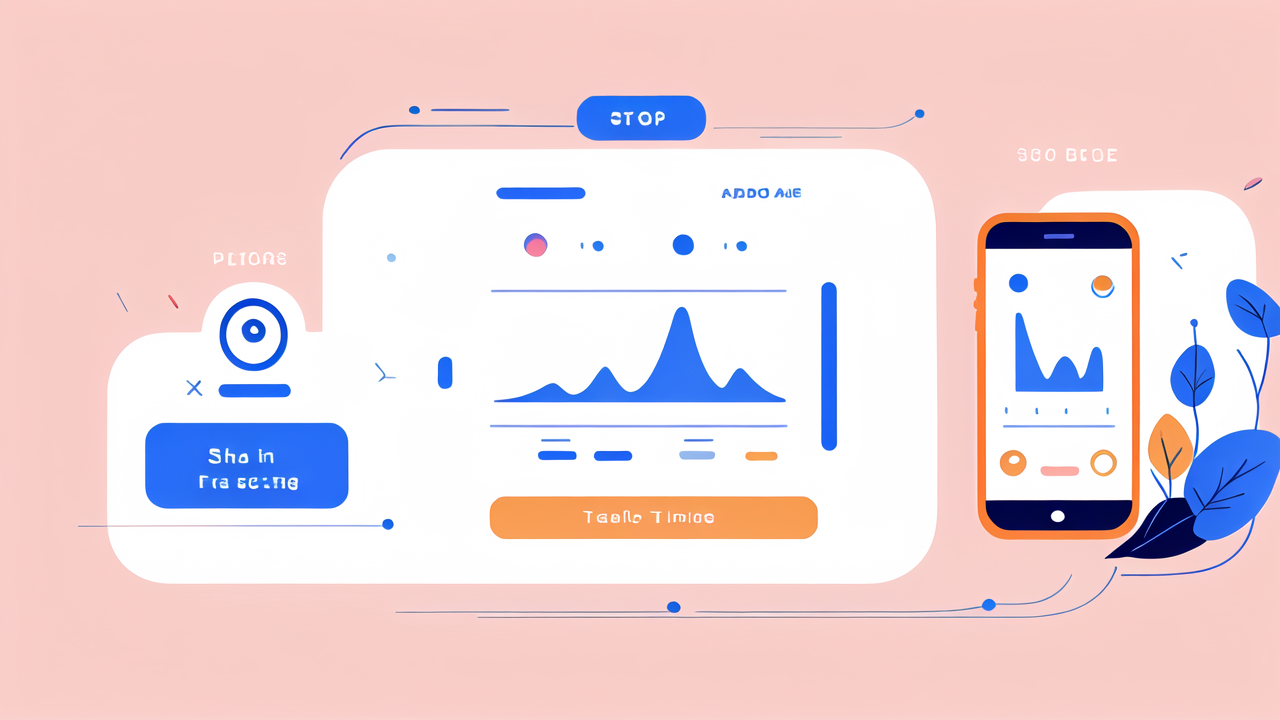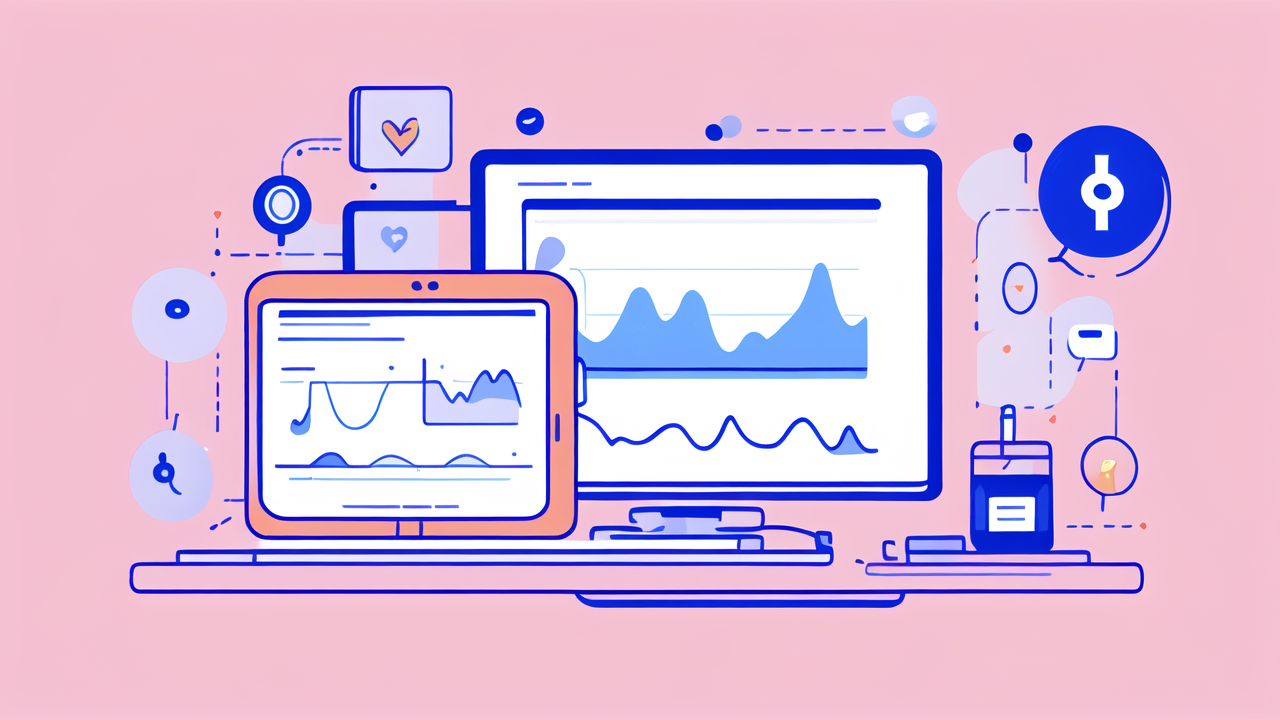Understanding the Role of Health Monitors in Today's Lifestyle
The Evolution of Wearable Health Tracking Devices
Wearable health tracking devices have come a long way. They started as simple pedometers. Now, they're advanced gadgets that do much more. Early devices only counted steps. Today's trackers monitor heart rate, sleep patterns, and even stress levels.

The first wearable health trackers were bulky and had limited features. They often needed manual input from users. As technology improved, these devices became smaller and smarter. They can now sync with smartphones and provide real-time data.
Recent years have seen a boom in wearable health tech. Smartwatches, fitness bands, and even smart clothing have hit the market. These devices use sensors to collect data about our bodies. They give us insights into our health that were once only available at a doctor's office.
Key Features of Advanced Health Monitors
Advanced health monitors offer a wide range of features. Here are some key functions:
- Heart rate monitoring: Tracks your pulse throughout the day
- Sleep tracking: Analyzes sleep patterns and quality
- Step counting: Measures daily physical activity
- Calorie tracking: Estimates calories burned based on movement
- Stress monitoring: Measures stress levels through heart rate variability
- Blood oxygen levels: Some devices can measure oxygen saturation in blood
- ECG readings: More advanced models can take electrocardiogram readings
These features help users get a complete picture of their health. They can track trends over time and spot potential issues early. Many devices also offer personalized insights and recommendations based on the data collected.
Benefits of Wearing a Health Monitor Every Day
Wearing a health monitor daily can have numerous benefits. It promotes awareness of your overall health and fitness. Here's how it can help:
- Motivation: Seeing your activity levels can encourage you to move more.
- Goal setting: Many devices allow you to set and track health goals.
- Early detection: Regular monitoring can help spot health issues early.
- Sleep improvement: Sleep tracking can help you develop better sleep habits.
- Stress management: Stress level monitoring can help you manage stress better.
- Fitness tracking: It helps track your workouts and progress over time.
- Health data sharing: You can share data with your doctor for better care.
By providing constant feedback, health monitors empower users to take control of their well-being. They encourage a proactive approach to health management. This can lead to better overall health outcomes and a more active lifestyle.
How Fila is Revolutionizing the Health Monitoring Market
The Collaboration Between Fila and Health Tech Startups
Fila, known for sportswear, is now entering the health tech market. They've partnered with innovative startups to create cutting-edge devices. This collaboration brings together Fila's brand power and the startups' tech expertise.

One key partnership is with a startup specializing in advanced sensors. This allows Fila to incorporate high-tech monitoring into their devices. Another collaboration focuses on AI-driven health insights. This helps Fila offer personalized health recommendations to users.
These partnerships allow Fila to quickly enter the competitive health tech market. They're leveraging the agility of startups with their established brand. This strategy helps them create products that stand out in a crowded field.
Breaking Down Fila's Smart Watch and Body Measurement Tracker
Fila's smart watch is packed with features. It offers:
- Continuous heart rate monitoring
- Advanced sleep tracking
- Built-in GPS for accurate activity tracking
- Water resistance for swimming
- Long battery life of up to 7 days
- Customizable watch faces
The body measurement tracker is a unique device. It uses bioelectrical impedance to measure:
- Body fat percentage
- Muscle mass
- Bone density
- Hydration levels
Both devices sync with a user-friendly app. This app provides detailed insights and trends over time. It also offers personalized health and fitness recommendations based on the data collected.
Comparing Fila's Approach to Health Monitoring with Other Brands
Fila's approach differs from other brands in several ways:
- Focus on holistic health: Fila emphasizes overall well-being, not just fitness.
- Affordable pricing: Their devices are priced competitively compared to premium brands.
- Fashion-forward design: Fila leverages its fashion background in device aesthetics.
- Integration with sportswear: Some Fila devices can be integrated with smart clothing.
- Emphasis on everyday use: Fila designs their devices for all-day wear, not just workouts.
While brands like Apple and Fitbit focus on premium features, Fila aims for accessibility. They offer advanced features at a more affordable price point. This approach could help Fila capture a wider market share.
The Impact of Fila's Health Monitor on the U.S. Market
Consumer Adoption and Market Trends for Health Monitors in the United States
The U.S. market for health monitors is growing rapidly. More consumers are interested in tracking their health data. Key trends include:

- Increased awareness of personal health management
- Growing interest in preventive healthcare
- Rise of remote patient monitoring
- Integration of health data with healthcare systems
Fila's entry into this market is well-timed. Their combination of affordability and advanced features appeals to many consumers. Early adoption rates for Fila's devices have been promising. Many users appreciate the balance of functionality and price.
The COVID-19 pandemic has accelerated interest in health monitoring. More people are taking charge of their health at home. This trend is likely to continue, benefiting companies like Fila.
Regulatory Considerations and Compliance for Health Monitoring Devices
Health monitoring devices face strict regulations in the U.S. The FDA oversees these products. Key considerations include:
- Data privacy and security
- Accuracy of health measurements
- Claims about health benefits
- Integration with medical devices
Fila has worked to ensure their devices meet all regulatory requirements. They've invested in rigorous testing and certification processes. This helps build trust with consumers and healthcare professionals.
Data privacy is a major concern. Fila has implemented strong encryption and user consent protocols. They're transparent about data use and give users control over their information.
The Future Outlook for Health Monitoring Technologies in Wearable Tech Industry
The future of health monitoring in wearable tech looks bright. We can expect to see:
- More advanced sensors for detailed health data
- Improved AI for personalized health insights
- Integration with telehealth services
- Expansion into medical-grade devices
- Increased focus on mental health monitoring
Fila is well-positioned to capitalize on these trends. Their partnerships with tech startups allow for rapid innovation. They're already working on next-generation devices with enhanced capabilities.
The wearable tech industry is moving towards more holistic health monitoring. Fila's approach aligns well with this trend. Their focus on overall well-being could give them an edge in the evolving market.
As health monitoring becomes more mainstream, Fila's accessible approach could drive wider adoption. Their blend of fashion, function, and affordability may help bring health monitoring to a broader audience.




Leave a comment
This site is protected by hCaptcha and the hCaptcha Privacy Policy and Terms of Service apply.